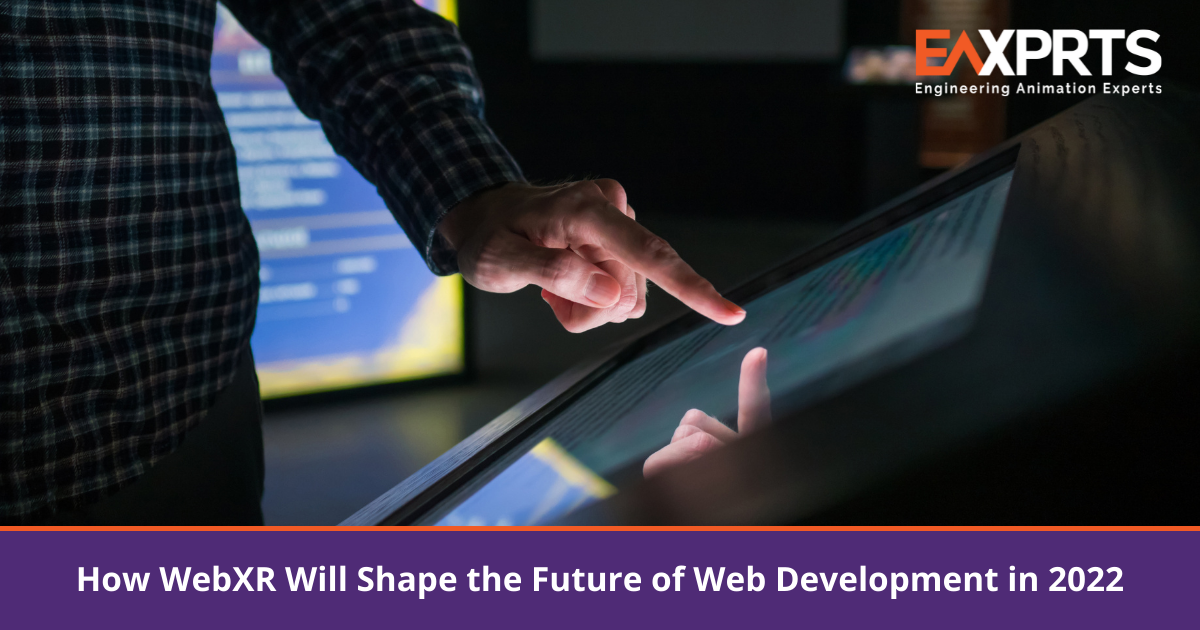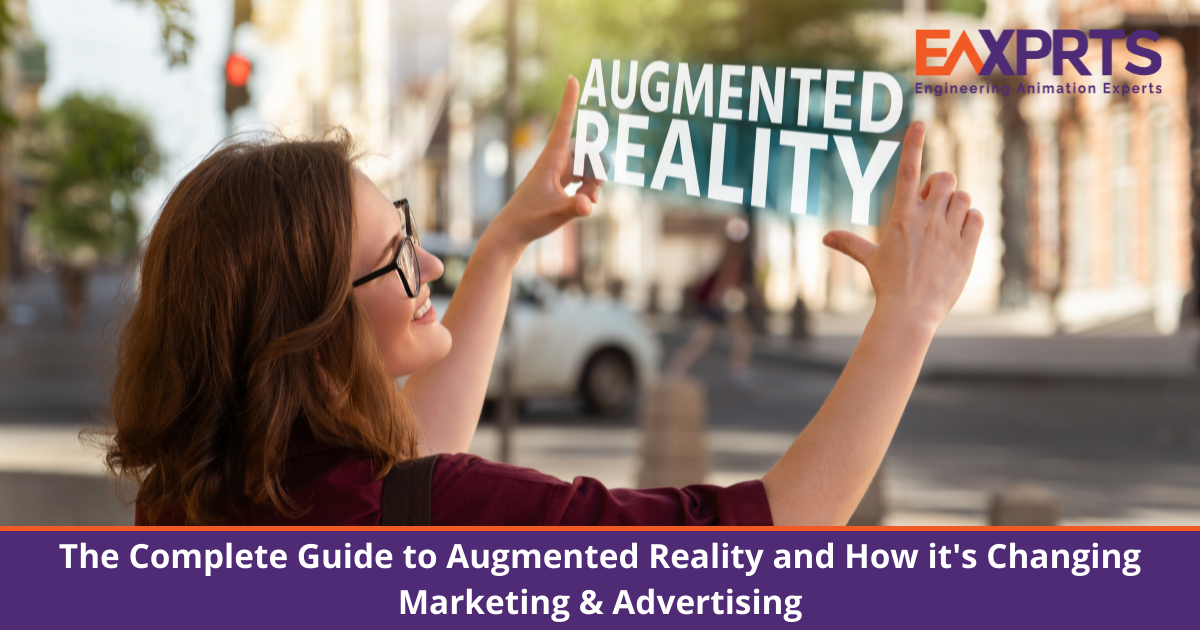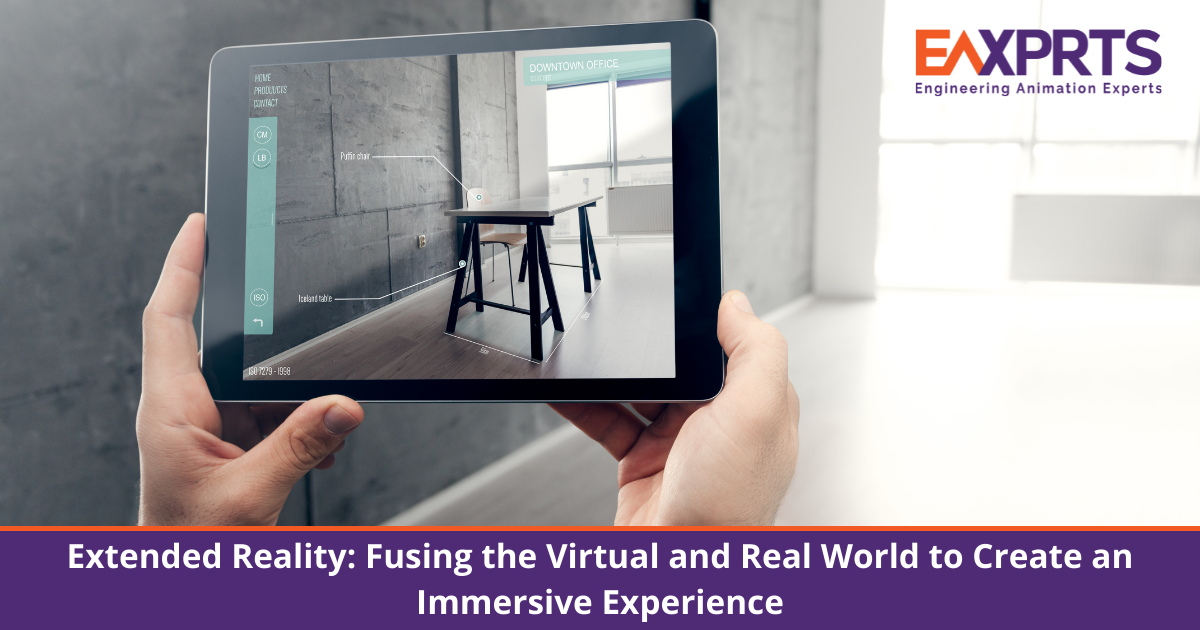
How WebXR Will Shape the Future of Web Development in 2022
April 26, 2022
The Complete Guide to Augmented Reality and How it’s Changing Marketing & Advertising
May 16, 2022An immersive experience is one that takes the viewer to another ‘world’ – real or imaginary or a combination of both – where it is possible to experience that environment and even interact with the characters and objects in it. In other words, it fuses the real world with the virtual world to create a unique ambience. Until a few years ago, immersive experiences were provided only by the 3D movies or the various attractions in theme parks based on these. With rapid evolution of technology, immersive experience has now become mainstream and available on handheld devices. As a result, immersive experience is now widely used not just for entertainment, but also for commercial ends like marketing and sales of products and services, or in industry for training and maintenance.
What is Extended Reality
It is important to understand the various underlying technologies that have coalesced into immersive experience, by following the evolution by going back to the origins. That brings us to Extended Reality (XR), which is the environment formed by combining the various ‘realities’ as in Virtual, Augmented and Mixed. It began with Virtual Reality (VR) which originated in the 1950s but gained popularity first with video games before Google introduced the Street View and later came the headsets from various manufacturers to let the viewer get immersed in the virtual world. While VR is a simulated world, in Augmented Reality (AR), the real world is augmented by the addition of the digital element of the former, which also makes it interactive with a lot of additional information made available via text, audio or graphics, e.g., getting the features of a product or specifications of the machine. Mixed Reality (MR) goes a step further and is actually a convergence of VR and AR, in combination with advanced graphics that blend the real and virtual worlds, creating a holographic experience with see through objects.
In short, Extended Reality or XR is a term that embraces all the immersive technologies that are in use today – virtual reality (VR), augmented reality (AR) and mixed reality (MR), or combinations thereof.
How do Augmented and Virtual Reality Work?
It would be interesting to go a little deeper to understand how these immersive technologies work.
Virtual Reality, as mentioned earlier originated in the 1950s, but became popular only in recent decades thanks to the gaming industry. The real booster for three popularity of VR is the growing computing power of the PC and other devices. Professionally it is used extensively in simulator training for pilots and even by auto driving schools. In fact simulation is the key word that explains VR – it simulates the environment and creates a make believe world that the human brain is tricked into accepting as real. There are two parts to the VR experience – software and hardware. The VR environment is created by software – it could be a game, flight simulation or different road conditions – in fact any virtual environment one wishes to create. The hardware comprises the PC with appropriate configuration in terms of CPU, GPU and RAM, plus a headset to get immersed into the viewing, and in case of flight or driving simulators, also the joystick of steering wheel and brakes, etc. The VR experience is not complete without the technical aspects like Field of Vision, Frame Rate and Sound Effects.
Augmented Reality, on the other hand, works in conjunction with devices with cameras –usually a smartphone or a tablet, but also smart glasses – armed with AR software. When pointed at an object, the software connects with it through computer vision, and downloads information about the object from the cloud and displays on the screen in 3D or holographic format. What happens in AR is that digital content – text, sound, video, graphics or even GPS data – is superimposed on physical objects, which also allow interaction and control, unlike VR where the viewer is immersed completely in an artificial environment. However, like VR, software is an essential part of AR, and it presupposes that the objects, machines, buildings or places are all mapped and the digital information is available in the cloud.
How Does XR Technology Differ from AR and VR
As already examined earlier, XR or Extended Reality is an all-embracing term that brings together all real-and-virtual environments, the interactions of humans and machines in this immersive world that is made possible by technology, devices and wearables like headsets, helmets and haptic gloves. Wherever and whenever computer technology is used to create graphic content and add information to real world objects in real time, it is XR at work. In the process, XR spans the other three ‘realities’ – Virtual, Augmented and Mixed – all distinct technologies that address different requirements, but with some common features and requirements.
XR is clearly the future of immersive experiences that will continue to evolve and grow with internet technologies and its iteration – the metaverse which will further spawn new realities. It is not for nothing that Facebook – that ubiquitous social media platform – recently rebranded itself as Meta. Extended Reality is certainly a disruptive technology that will change the way people will work and play in future.
The Future of Extended Reality & The Intersection of Technology & Culture
The pandemic has convinced the world the advantages of digital technologies, and immersive experience features right at the top. When Covid forced the harsh reality of the lockdown on people across the globe, technology provided the escape route from reality to a world of imagination, and imagination in turn helped provide a route back to reality. It convinced people that they do not have to travel to the office to get the work done but the virtual office can visit them at home. And this is just scratching the surface. There are several ways Extended Reality is changing the way the world now conducts business.
Technicians can now troubleshoot problems by remote without visiting the site, gaining access to the equipment by remote through AR/VR. Whether it is showing demonstrations of products and equipment or conducting training programmes for maintenance, these are activities that can be done anywhere and whenever necessary with immersive technologies.
Shoppers can visit virtual showrooms and experience the products, try on apparel; check the shoe sizes, all thanks to XR. People can explore the exhibits at a museum or even experience popular tourist sites without leaving their homes.
Conclusion
The consumption of digital technologies is on the rise. Today, Extended Reality is one of the fastest growing technologies and there is hardly any commercial or industrial establishment that is not already using or exploring the use of this powerful medium. Even without the pandemic and the lockdown which accelerated the usage, XR was growing rapidly.
No company can afford to miss the XR bus. It is a technology that can augment the efficiency of its regular workforce at little or no extra cost. From concept to commissioning, Extended Reality has a role to play in every activity of an enterprise. Help is available from professional service providers with expertise on each and every aspect of immersive experience.
Talk to us today! Reach us on sales@eaxprts.com



